Term archive

投稿タイプ:videos
Discover your own KYOTO | Kyoto Otokuni Bamboo Grove

投稿タイプ:itineraries
Relax in Nature and Tour Some of Kyoto’s Photogenic Locations
This itinerary begins following some sightseeing in nearby Nara, famous for its historical temples and shrines amongst natural settings. Today, we're setting out to explore some of southern Kyoto's photo-worthy locations, with some breaks in relaxing, nature-filled spots. From Nara Station, head first to beautiful Gansenji Temple, known for its vermillion three-storied pagoda in the mountain forest, as well as gorgeous hydrangeas that are beautiful around June. Next, head to Keihanna Commemorative Park for a relaxing stroll through its landscape garden, as well as access to a variety of activities and seasonal charms. From there, it's on to Uji for some delightful matcha sweets, and the World Heritage site Byodoin Temple. On day two, rent a bicycle and head to eastern Kyoto's bamboo forest for some wonderful sights, and some tea time. After a final stop for more exquisite hydrangea at Yokoku-ji Temple, be sure to try the local specialty of bamboo shoot macarons!

投稿タイプ:column
A Different Side of Kyoto: 8 Local Dishes That Shouldn’t Be Missed

投稿タイプ:column
A Different Side of Kyoto: 7 Lodgings with Unique Activities

投稿タイプ:column
10 Inspiring Places in Western Kyoto: Bamboo Groves, Temples, and History

投稿タイプ:itineraries
Travel around the sights: Kyoto City’s suburbs
The suburbs of Kyoto with its own history, historical landmarks, scenery, and specialties nurtured by different climates has a different look and feel from the main city. Luckily, it is just a quick hop out of Kyoto City. Here's a course that makes efficient use of public transportation as you tour around everything from streets that still have an ancient feel to them to famous tourist spots popular with people from all over the world and power spots where you can get in touch with nature.
Take the Kansai Airport Express Haruka from Kansai International Airport to Kyoto.
By train (Kansai Airport Express Haruka (JR Kansai Airport Line) to Kyoto): 1 hr 20 mins
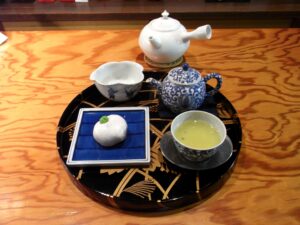
投稿タイプ:restaurants
Chatei Fu-an
Established in 1995, Chatei Fu-an was the first tea boutique in the Otokuni Region of Kyoto Prefecture. It's accredited as an Uji tea café, and here you can find the kind of Uji matcha green tea, high-quality gyokuro green tea, medium grade sencha tea, select houjicha roasted green tea, and select genmaicha (tea with roasted rice) you can only find in a boutique. Each tea is carefully brewed for your enjoyment.
Chatei Fu-an also offers a variety of original drinks and sweets made with matcha, and original dishes made with tea leaves.

投稿タイプ:restaurants
Nagaokakyo City Kinsuitei
Founded in 1881, this restaurant incorporates a pond constructed by the 14th century Imperial Prince Toshihito and sukiya-style gazebos of various sizes. Take in the seasonal views as you enjoy Kinsuitei's renowned bamboo shoot cuisine.
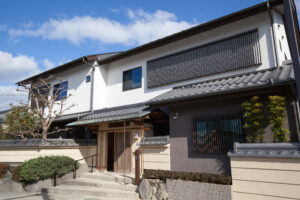
投稿タイプ:stay
Kyoto Guest Inn Nagaokakyo
Kyoto Guest Inn Nagaokakyo is conviently located outside of Kyoto with easy access to Osaka and Kobe, making it ideal for sightseeing in Kansai. The attached bar is renovated from a 100 year-old warehouse, which provides a great atmosphere to sit and enjoy a relaxing evening.
Kyoto Guest Inn Nagaokakyo values its connection with the local area and its history, and the inn uses bamboo through the building, including in each of the 4 guest rooms, as it is a symbol of Nagaokakyo. The inn also offers traditional Japanese cultural experiences such as tea ceremony.
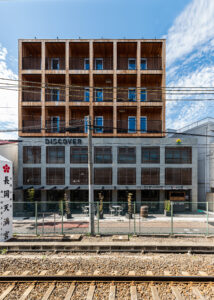
投稿タイプ:stay
Hotel Discover Kyoto Nagaokakyo
Hotel Discover Nagaokakyo opened in September 2019. This concept hotel offers a new way to enjoy a trip that connects people and towns through experiences and local connections. Located conveniently right in front of Hankyu Nagaoka Tenjin Station, it is only 15 minute sfrom the hotel to the center of Kyoto city. The hotel offers of variety of twin bed rooms, as well as experiences of zen meditation, tea ceremony, samurai sword fighting, and more. At the café and bar Machibaru SUBACO on the first floor of the hotel, you can find local vegetables, eggs, pickles, and sake that can only be tasted in Nagaokakyo.
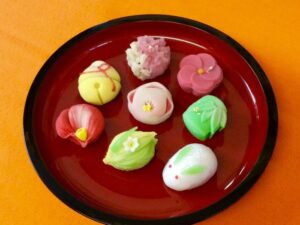
投稿タイプ:activities
Learn to make your own traditonal wagashi sweets with a professional confectioner (in Komyo-ji Temple)
Make your own seasonal Japanese confectionary (wagashi) amongst the beautiful Japanese maple trees of Komyo-ji Temple with the equipment and guidance of a professional confectioner.
Kikuharu is a long-standing wagashi shop in Nagaoka City, Kyoto Prefecture, and along with various other original sweets, it's known for creating a bamboo shoot-shaped sweet made with real bamboo shoot that's known as Nagaoka's "Takenoko Monaka (bamboo shoot wafer cake)" souvenir. Kikuharu's second generation master confectioner, Mr. Nishiyama Motofumi, now also teaches about the culture and customs of wagashi confectionary in this activity. Before you dive in to the world of wagashi, though, included in this experience is a guided tour of Komyo-ji Temple by a monk, who will tell the story of the temple's history, relevant historical figures, and the lesser-known stories about the Buddha statues within (such as the Amida Nyorai you first see), as well as show you the Mie-do Hall. After strolling around the temple and taking in the dry rock garden, it's time to make some wagashi! Afterwards, you're welcome to enjoy your wagashi here, or take them home.
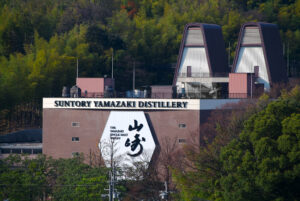
投稿タイプ:sightseeing
Suntory Yamazaki Distillery
The Suntory Yamazaki Distillery is a Japanese whisky distillery in the Yamazaki District of Kyoto Prefecture, not far from Kyoto City and close to Uji—the region of Kyoto famous for matcha green tea—and the famous Otokuni Bamboo grove. The Yamazaki region has long been known for its pure and soft water, for which the distillery founder, Torii Shinjiro, chose this location in particular. Nestled between Mt. Tennozan and Mt. Otokoyama, close to the river's pure water, and in an ideal climate for whisky maturation, the Suntory Yamazaki Distillery is now known as the birthplace of Japanese whisky, and home to the internationally-renowned Yamazaki Single Malt Whisky. Today at the distillery there are whisky tastings and guided tours explaining the whisky-making process (tours are available in foreign languages), and the tour includes an exlusive blended whisky tasting (not for regular sale). At the Suntory Yamazaki Distillery there is also a whisky library, and a free-to-enter whisky museum where you can learn about the history of whisky in Japan. Visiting requires reservation up to a day in advance.
